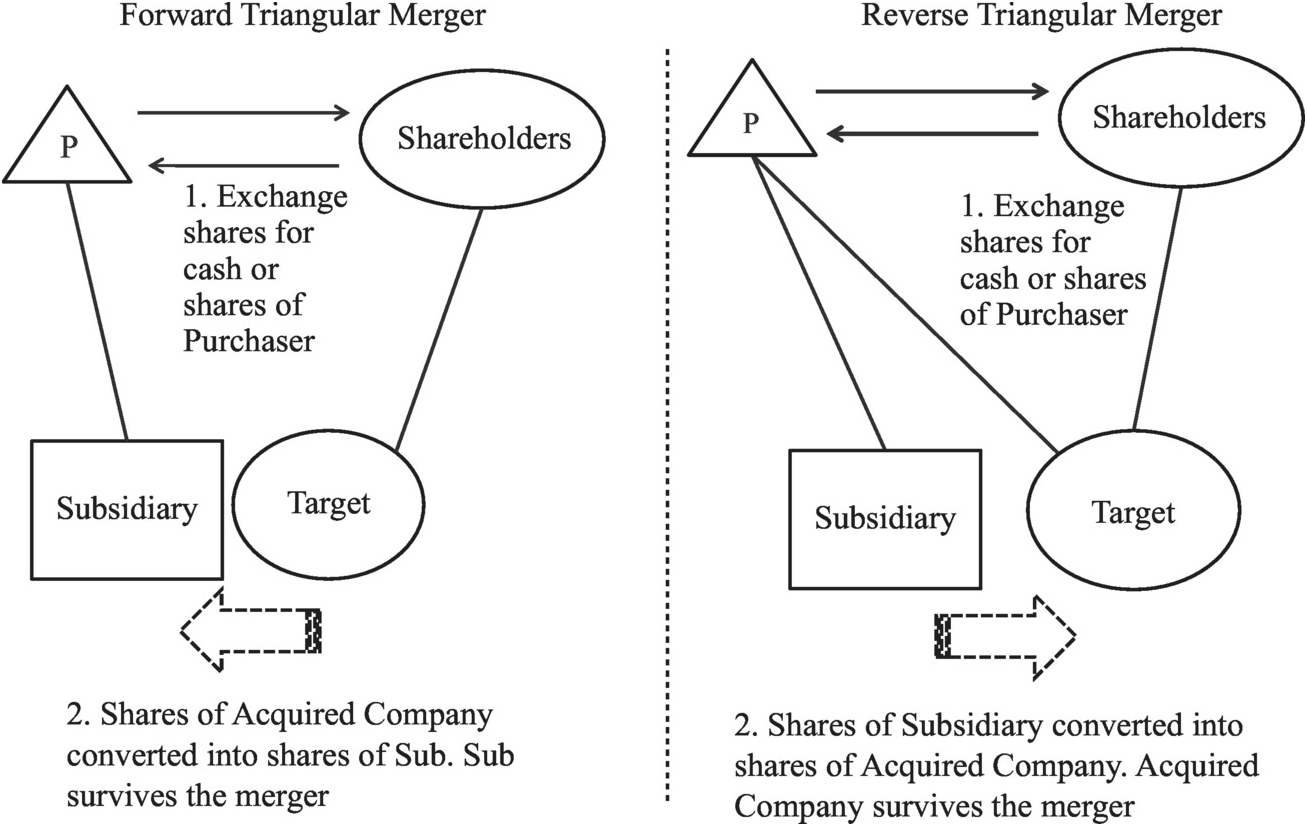The creativity of various types of M&A work are as diverse as the company structures and scenarios bartered with in such transactions.
Generally there is a compelling reason for structuring your deal in a particular way. When it comes to triangular mergers, tax, legal and ownership challenges can be a compelling reason for choosing a triangular structure.
Here, we discuss some of the reasons and the processes of performing such a merger.

Contents
Forward Triangular Merger
When a buyer finds an applicable target to merge the buyer forms a subsidiary entity and the seller is merged into the sub. The buyer’s stock is issued to the seller’ shareholders. The seller assets and business are then owned by the buyer. In this scenario, the seller entity is dissolved and the seller shareholders receive buyer stock. The tax consequences are the same in this scenario as they would be in a statutory merger reorganization. Section 368 allows for such triangular mergers to be treated as tax-free reorganizations.
There are some substantial benefits from this type of merger scenario. First, it includes the flexibility found in a traditional statutory merger. Second, it enables the purchaser to acquire the assets within a completely new entity. Third, it permits substantial non-stock consideration to be used without the threat of changing the tax-free character of the merger.
Qualifications of a Forward Triangular Merger
For a forward triangular merger to be legal, there are a number of key qualifications. First, regular continuity of interest must be maintained within the buying entity/organization. That is, continuity of business interest, continuity of business enterprise and business purpose must be maintained. Second, a substantial portion of the seller’s property must be acquired by the subsidiary. Like a C-corp, the language is worded “substantially all.” Third, the subsidiary stock is barred from being used in the transaction. Fourth, if seller had been merged into buyer, the transaction should be structured so as to qualify as a statutory merger. In most cases, this fourth requirement is simply a restatement of the first requirement: continuity of business interest. A substantial portion of the consideration may be assets other than stock and the transaction will still qualify.
Tax-free treatment of a reorganization of this type still applies, but the seller’s shareholders will still be required to pay taxes on any non-stock consideration from the transaction.
Reverse Triangular Merger
In the case of a reverse triangular merger, the seller, not the subsidiary, becomes the surviving entity of the transaction. In this case, the buyer forms a subsidiary entity then merges the sub with the seller. Buyer’s stock is then issued to seller’s shareholders. In this case the seller entity ends up as a wholly-owned subsidiary of the buyer entity. This scenario is attractive in scenarios when the seller’s continued existence is necessary for reasons other than tax reasons. These could include franchise rights, lease rights, contract rights or specific licenses which may be held and solely-owned by the seller. Tax consequences are the same with a forward triangular merger, but the qualification for such a transaction is a bit more difficult.
Qualifications of a Reverse Triangular Merger
Most of the qualifications required to perform a reverse triangular merger are the same as those in a forward traingular merger scenario. The major exception is the amount of non-stock consideration that can be given to shareholders. To qualify a reverse triangular merger as a tax-free reorganization, 80% of the seller’s stock must be acquired with voting stock of the buyer. In other words, the non-stock consideration in the transaction cannot be greater than 20% of the total. In contrast to a forward triangular merger, reverse mergers allow for the survival of the selling entity after the merger is complete. The downside is that there is less flexibility when it comes to the amount of non-stock consideration that can be utilized.
- How to Offset W-2 Income Taxes by Investing in Real Estate - July 19, 2024
- How to Invest in Real Estate Sight Unseen - July 16, 2024
- 19 Reasons Foreigners Should Invest in US Single-Family Real Estate - July 11, 2024

